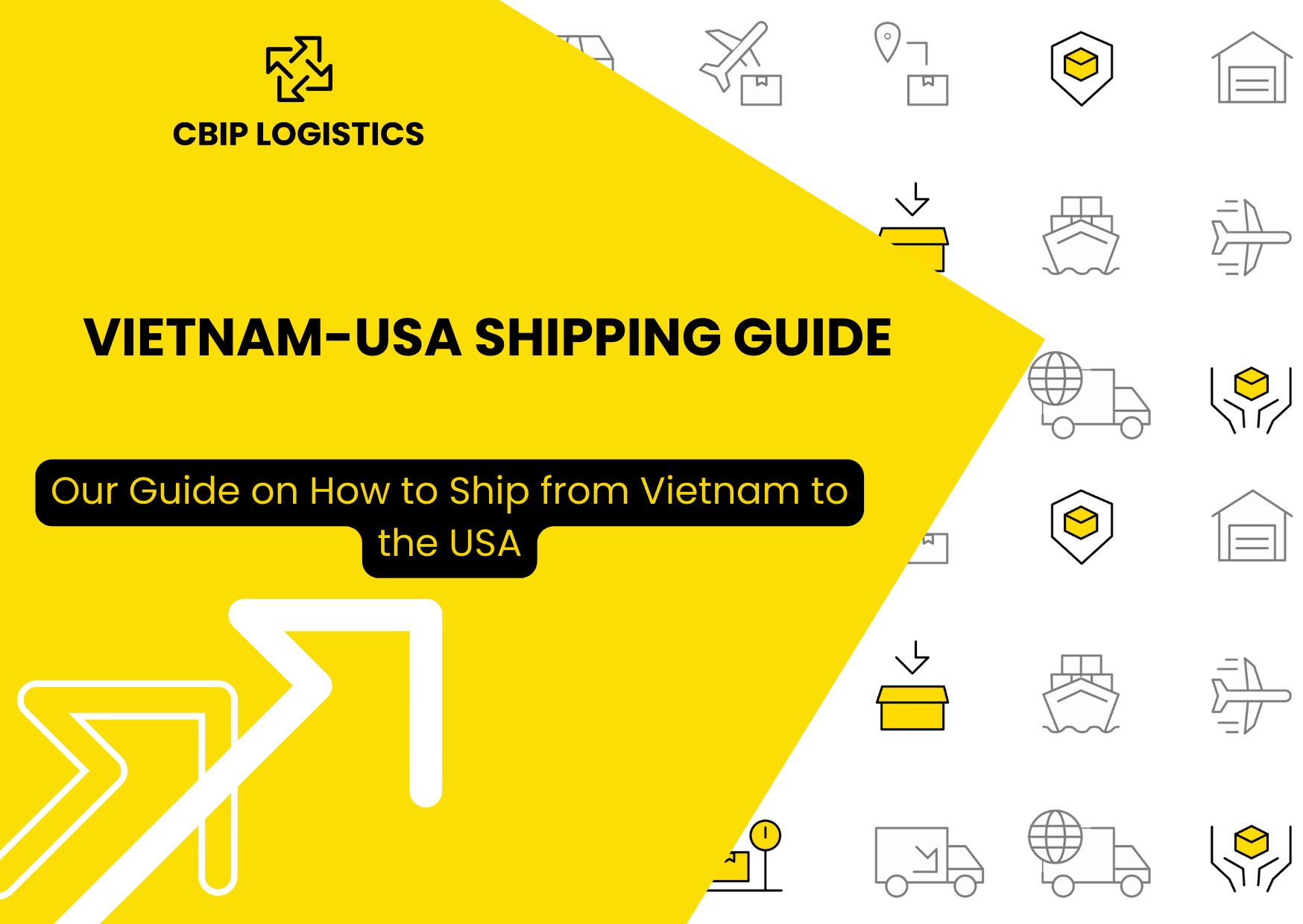E-Commerce Guide to Shipping from Vietnam to the US

In 2022, the USA imported $127,480.7 million worth of goods from Vietnam, up from under 102,00 million in 2021.
As the USA’s 13th largest trading partner, trade conditions between the two countries are pretty favorable. And even though recent inflation and demand fluctuations have stymied growth, the nation is continuing its impressive rise as a major manufacturer in the Asia-Pacific region.
Given these factors, it’s no surprise that e-commerce retailers in the US are looking to Vietnam as a primary or secondary manufacturing spot. However, you need to get a few things figured out before you start importing your Vietnamese goods onto US soil.
As an e-commerce retailer, you will need to figure out who is going to take care of the following elements of logistics to ensure your products make it out of Vietnam and into the US.
- Freight shipping
- Customs clearance
- Inland transportation
- Warehousing
You’ll also need to figure out what ports to ship into and out of, and how much it's going to cost.
In this blog post, we’ll take a closer look at the considerations at hand when shipping goods from Vietnam to the United States. We’ll cover:
-
Which freight method is right for your shipment type
-
What you need to get your vietnamese goods through US customs
-
Info on top ports in Vietnam and the US
-
Top tips for smooth importing
Read About CBIP’s Global 4PL Logistics Services
Freight options
There are two delivery options for international shipping services to and from Vietnam: Air freight and sea freight. It’s important for you to choose the right type of transport to make the shipment more time and cost-efficient.
To make sure you choose the right international shipping method, it’s essential that you know the volume, weight, and dimensions of your items. This will help you decide if you should ship air freight or sea freight, full container load or less container load.
Seafreight
Sea freight is the perfect option to ship heavy machinery, equipment, cars, or any other large-sized products that would be difficult to fit in an airplane.
Sea freight is not just for large items. If you don’t need the items quickly, sea freight will be a more economically savvy choice.
However, keep in mind that the two methods have very different shipping times: Sea freight shipping from Vietnam to the US typically takes from 24-29 days port-to-port. For door-to-door estimates, you can tack 10-12 days on top of that for a total transit time of 37 to 41 days.
FCL vs LCL
FCL, or Full container load, will be needed if you have large goods or many goods that will take up an entire container.
LCL, or Less container load, is the typical option for retailers shipping smaller items. This container will be shared with other shippers. *Note* This means that you will need to factor in extra time for reconsolidation at the destination port.
Ports & time estimates
If you choose to work with a freight forwarding company, they will likely advise you on which ports to ship out of in Vietnam. Even if you are not using a freight forwarder, other providers like your manufacturer/local supplier will be able to give you some guidance on which port will work best for your shipment.
The top loading ports in Vietnam are:
- Hai Phong
- Da Nang
- Ho Chi Minh
Whereas the top ports in the USA are located in:
- Los Angeles
- Houston
- New York
Sea freight shipping is typically estimated to take around 37 to 45 days from Vietnam to the US, but that obviously changes depending on which ports/route you use. For instance, Hai Phong to Los Angeles will take on average 20 days port-to-port, while Ho Chi Minh to Los Angeles will take longer — anywhere from 21 to 30 days.
Related: Logistics in Vietnam
Air freight
Air freight is the fastest and, therefore, most expensive shipping method. It’s recommended for smaller packages.
The main cargo airports in Vietnam are Tan Son Nhat International (in Ho Chi Minh), and Noi Bai International (Hanoi).
For regular airfreight from both international Vietnamese airports to the USA, shipping time will amount to around 3 to 8 days port-to-port, and 8 to 16 days door-to-door.
What about Express?
Express freight slashes shipping time down to just 1 to 4 days door-to-door.
Express shipping is a great tool to have in your arsenal, albeit an expensive one. You should only use express if you have a small parsel that needs to be delivered very urgently.
Customs must-haves
Before shipping your products over, you need to make sure everything is in order to get them through US customs.
First, you need to figure out the tariff rates for each product. You can do that by going on the official website and finding the HS code for each product.
Next, you will need to produce a certificate of origin. In order to benefit from certain tariff reductions, you need this document provided and notarized by the Ministry of Industry and Trade of Vietnam attached to your shipment.
You will also be required to have the following documents:
- Commercial invoice
- Packing list
- Bill of lading (sea freight) or airway bill (air freight)
- Customs bond
- Proof of IRS number
- Importer security filing (sea freight only)
- Any government certifications
*Depending on your method of shipment, some of these may not be applicable to you and are therefore not needed.
Tips for success
Tip #1: Compare offers from at least a few different freight forwarders before deciding on a method of shipment.
You want to make sure that you are working with someone who is knowledgeable about shipping and a trustworthy partner — a partner like that should be able to find the shipping method that works for you and the best rates.
Tip #2: Book shipping in advance to save big.
This is a no-brainer, but sometimes the best tips are simple: Book early so that you can use sea freight! Air freight can be as much as 12 to 16 times more expensive than sea freight, so think ahead to save whenever possible.
Tip #3: Get your HS code and customs documents together in advance.
Make sure that you understand what you need and how much its going to cost you. This will help you avoid hold-ups and extra fees at customs, and knowing your hs codes means calculating your taxes (and budgeting for them) can be done well in advance.
Searching for a freight forwarder you can trust? Look to CBIP Logistics
The options for freight forwarders and international carriers who can get your goods from Vietnam to the US are endless. As a busy business owner, you need to compare different companies to see what works bet for you, but you also don’t want to get overwhelmed by combing through too many choices.
We’d recommend comparing a few that you’ve hear positive feedback on from other businesses. Since you are here, we’d like to ask you to consider us at CBIP Logistics as one of your options.
As a fourth party logistics company, we function as your international freight forwarder. Unlike traditional logistics companies who own their own assets (ships, warehouses, trucks), we instead work with a global network of providers who own those things.
That partner network is made up of a collection of logistics providers to fill every single role in your logistics operation. That includes land transit in Vietnam, freight forwarding to assist in customs clearance and shipping, ocean and air freight, and everything else you need to get your product from the factory to your customer’s doorstep.
Working with multiple carriers enables us to offer you the most competitive shipping rates on the market and fit your unique needs. Don’t waste your valuable time trying to find the right local carrier in Vietnam — CBIP Logistics is here to help you.
CBIP takes the headache out of shipping goods to and from Vietnam. We provide a tailor-made service plan to meet your shipping needs and adapt to new changes.
Take a look at all the logistics services we provide and benefit from our network of trusted providers and experts on the ground in Vietnam. Contact us today and we will get back to you within 24 hours!







